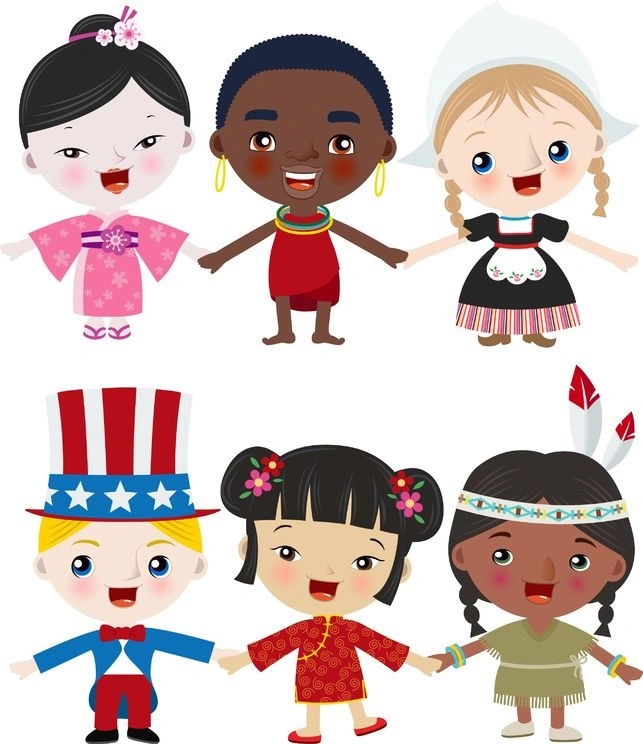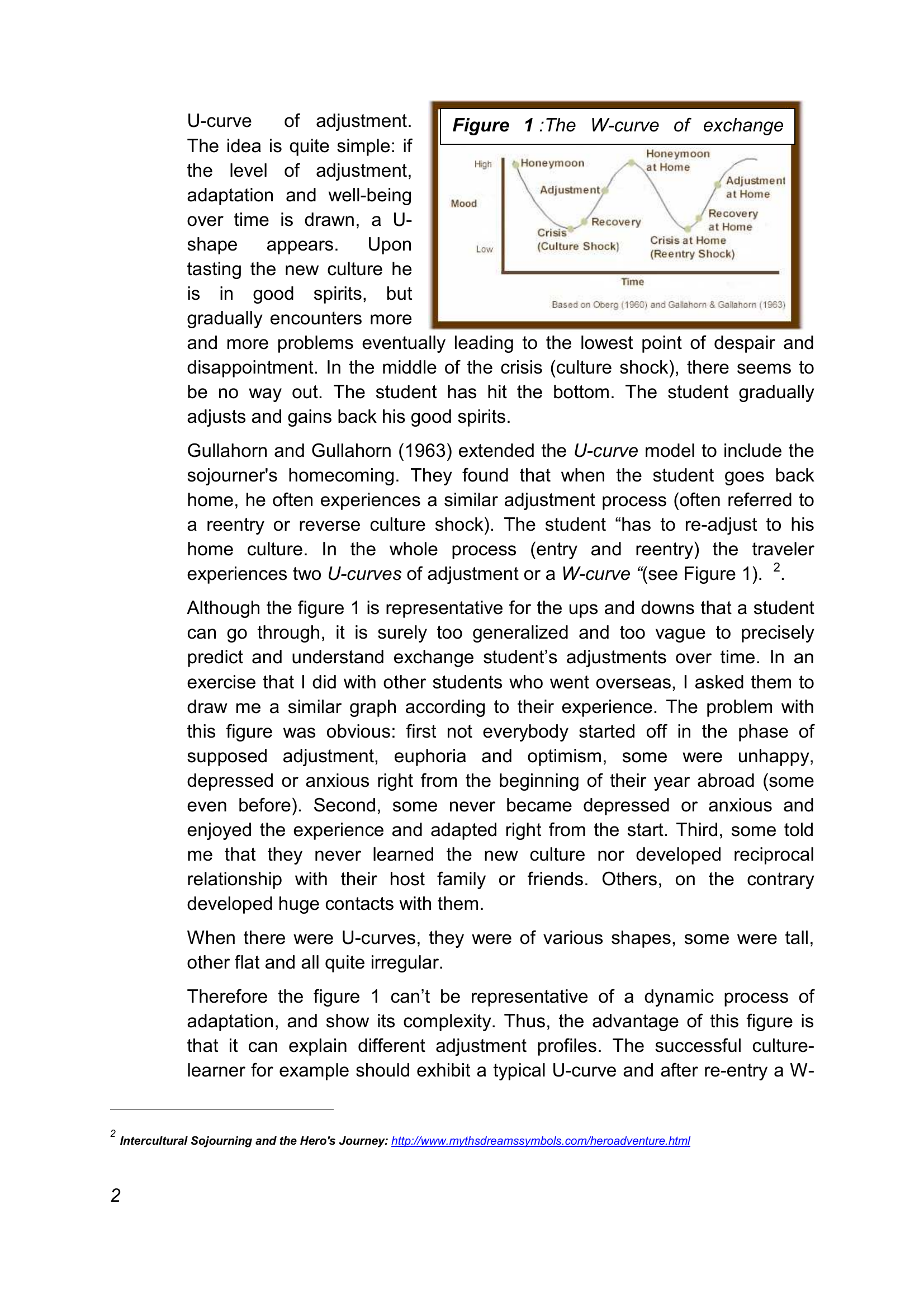The different phases resulting from culture changes, illustrated by my personal experience
Publié le 19/01/2013

Extrait du document


«
2
U-curve of adjustment.
The idea is quite simple: if
the level of adjustment,
adaptation and well-being
over time is drawn, a U-
shape appears.
Upon
tasting the new culture he
is in good spirits, but
gradually encounters more
and more problems eventually leading to the lowest point of despair and
disappointment.
In the middle of the crisis (cultur e shock), there seems to
be no way out.
The student has hit the bottom.
The student gradually
adjusts and gains back his good spirits.
Gullahorn and Gullahorn (1963) extended the U-curve model to include the
sojourner's homecoming.
They found that when the st udent goes back
home, he often experiences a similar adjustment pro cess (often referred to
a reentry or reverse culture shock).
The student h as to re-adjust to his
home culture.
In the whole process (entry and reent ry) the traveler
experiences two U-curves of adjustment or a W-curve (see Figure 1).
2.
Although the figure 1 is representative for the ups and downs that a student
can go through, it is surely too generalized and to o vague to precisely
predict and understand exchange students adjustmen ts over time.
In an
exercise that I did with other students who went ov erseas, I asked them to
draw me a similar graph according to their experien ce.
The problem with
this figure was obvious: first not everybody starte d off in the phase of
supposed adjustment, euphoria and optimism, some we re unhappy,
depressed or anxious right from the beginning of th eir year abroad (some
even before).
Second, some never became depressed o r anxious and
enjoyed the experience and adapted right from the s tart.
Third, some told
me that they never learned the new culture nor deve loped reciprocal
relationship with their host family or friends.
Oth ers, on the contrary
developed huge contacts with them.
When there were U-curves, they were of various shap es, some were tall,
other flat and all quite irregular.
Therefore the figure 1 cant be representative of a dynamic process of
adaptation, and show its complexity.
Thus, the adva ntage of this figure is
that it can explain different adjustment profiles.
The successful culture-
learner for example should exhibit a typical U-curv e and after re-entry a W-
2 Intercultural Sojourning and the Hero's Journey: http://www.mythsdreamssymbols.com/heroadventure.htm l
Figure 1 :The W-curve of exchange.
»
↓↓↓ APERÇU DU DOCUMENT ↓↓↓
Liens utiles
- Electric Ladyland [The Jimi Hendrix Experience] - analyse de l'oeuvre musicale.
- The Rise & Fall of Ziggy Stardust and the Spiders from Mars [David Bowie] - analyse de l'oeuvre musicale.
- The Girl from Ipanema - analyse de l'oeuvre.
- The Rise of Don Vito Corleone, from The Godfather by Mario Puzo.
- Education in Great Britain ? Education is compulsory from the age of 5 (4 in Northern Ireland) to the age of 16.











